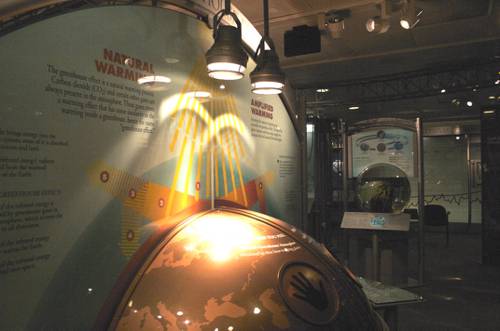
FAQ About The Role of Interactive Museum Exhibits in Cultural Engagement

What are interactive museum exhibits?
Interactive museum exhibits are displays or installations within a museum setting that enable visitors to engage with the exhibits through technology or other hands-on methods. These exhibits often involve digital interfaces, touch screens, virtual reality, or augmented reality to enhance learning and engagement, allowing visitors to actively participate in the educational experience rather than just being passive observers.

How do interactive exhibits enhance cultural engagement?
Interactive exhibits enhance cultural engagement by providing immersive and participatory experiences that allow visitors to connect more deeply with the subject matter. By involving visitors in the storytelling process and encouraging hands-on participation, these exhibits help to create a personal connection with the culture being presented, making it more relatable and memorable.

What types of technology are commonly used in interactive museum exhibits?
Common technologies used in interactive museum exhibits include touch screens, virtual reality (VR), augmented reality (AR), motion sensors, interactive projections, and digital kiosks. These technologies enable visitors to explore exhibits dynamically and can include features such as interactive maps, 3D models, and simulations that provide a deeper understanding of the artifacts and their cultural significance.

What are the benefits of participatory exhibits in museums?
Participatory exhibits in museums offer several benefits, including increased visitor engagement, improved learning outcomes, and enhanced visitor satisfaction. These exhibits help make the museum experience more engaging and enjoyable, encouraging repeat visits. By enabling visitors to actively engage with the content, they often leave with a better understanding and appreciation of the cultural narratives presented.

Can interactive exhibits cater to diverse learning styles?
Yes, interactive exhibits are well-suited to cater to diverse learning styles. By incorporating different forms of media such as audio, visual, and tactile elements, museums can address the needs of visual learners, auditory learners, and kinesthetic learners alike. This diverse approach helps ensure that all visitors can engage with the exhibits in a manner that resonates with them personally, leading to a more meaningful educational experience.

How does augmented reality (AR) enhance museum exhibits?
Augmented reality enhances museum exhibits by overlaying digital information or images onto the real-world setting, enriching the visitor's experience with additional context or interactive elements. It allows visitors to visualize how artifacts might have looked in their original settings or to access supplementary information, making the cultural stories more vivid and comprehensive.

What role do interactive exhibits play in education?
Interactive exhibits play a crucial role in education by facilitating active learning. They engage visitors in hands-on, minds-on activities that encourage exploration, critical thinking, and problem-solving. This approach not only helps visitors understand complex cultural narratives but also retains their interest and makes learning more enjoyable and long-lasting.

Are interactive exhibits suitable for children?
Interactive exhibits are particularly suitable for children as they align well with the natural curiosity and active learning style of young audiences. By providing tactile and visually stimulating experiences, these exhibits keep children engaged and help convey educational content in a fun and memorable way, fostering an early interest in culture and history.

How do museums measure the success of interactive exhibits?
Museums measure the success of interactive exhibits through various methods, including visitor feedback, engagement metrics, and educational outcomes. Surveys and observation studies help assess how visitors interact with the exhibits, while analytics software can track usage patterns and dwell times. Success is often determined by the ability of the exhibit to educate, engage, and provide meaningful experiences to visitors.

Can interactive exhibits make museums more accessible?
Interactive exhibits can enhance accessibility in museums by providing alternative forms of engagement that are not solely reliant on text or traditional displays. Features like audio guides, sign language videos, and large print or tactile elements can help make exhibits more accessible to visitors with visual or hearing impairments or those with different learning needs.

What challenges do museums face when implementing interactive exhibits?
Some challenges museums face when implementing interactive exhibits include technological costs, maintenance, and ensuring that technology enhances rather than distracts from the educational content. Additionally, staff training and adapting traditional exhibit spaces for new technologies can pose logistical challenges. Museums must balance interactivity with narrative coherence and historical accuracy.

How can interactive exhibits promote understanding of cultural heritage?
Interactive exhibits promote understanding of cultural heritage by offering immersive experiences that allow visitors to explore and engage with cultural narratives in a multi-sensory manner. This engagement facilitates a deeper comprehension of the complexities and nuances of cultural heritage, helping visitors form a personal connection and appreciation for the cultural stories and artifacts presented.

Do interactive exhibits require special training for museum staff?
Yes, museum staff may require special training to manage and maintain interactive exhibits effectively. This training can include understanding the technology used, troubleshooting, and engaging with visitors to ensure a smooth and informative experience. Ensuring staff are well-prepared helps optimize the functionality and educational impact of the exhibits.

How do virtual reality (VR) experiences function in museum settings?
In museum settings, virtual reality experiences function by immersing visitors in a simulated environment where they can explore historical sites, artistic creations, or cultural events. Through VR headsets, visitors can experience settings and scenarios that are otherwise inaccessible, providing a captivating and educational journey through time and space.

Can interactive exhibits include mobile apps?
Yes, interactive exhibits can include mobile apps that visitors can use on their smartphones or tablets. These apps may offer supplementary information, interactive maps, scavenger hunts, audio guides, and augmented reality features to enrich the museum experience further and allow visitors to engage with exhibits at their own pace.

How do motion sensors contribute to interactive exhibits?
Motion sensors contribute to interactive exhibits by allowing for non-contact interaction with displays. They can track the movement of visitors and trigger audio, visual, or kinetic responses as they interact with the exhibit, creating a dynamic and engaging experience that responds to visitor actions in real-time.

What is the future of interactive exhibits in museums?
The future of interactive exhibits in museums is likely to involve even greater integration with cutting-edge technologies such as AI and machine learning, enhancing personalization and interactivity. These advances could lead to more tailored educational experiences, predictive visitor engagement, and seamless integration with digital platforms, enriching the ways visitors connect with cultural and historical narratives.

Why are interactive exhibits becoming more popular in museums?
Interactive exhibits are becoming more popular in museums due to their ability to attract a broader audience, increase visitor engagement, and heighten educational effectiveness. As cultural institutions strive to remain relevant in the digital age, interactive technologies offer innovative solutions to showcase cultural narratives in compelling and memorable ways.

How do touch screens enhance the museum visitor experience?
Touch screens enhance the museum visitor experience by providing an intuitive and engaging way to interact with digital content. Visitors can explore detailed information, manipulate interactive maps or models, and access multimedia content, which enriches their understanding and interaction with the exhibits without the need for guided tours or printed materials.
